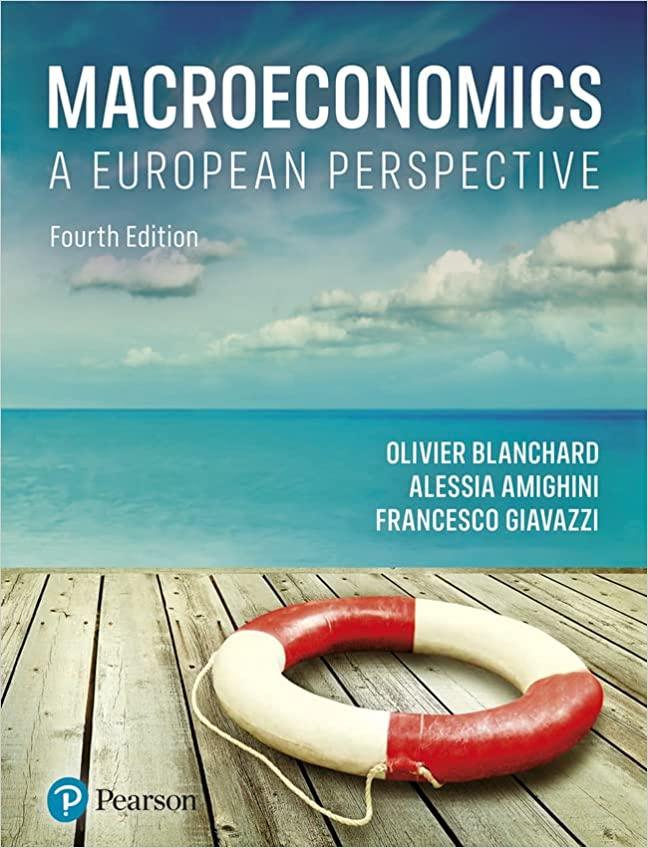a. The equation of the Phillips curve from 1970 to 1995 is: [pi_{t}-pi_{t-1}=7.4 %-1.2 u_{t}] Calculate and
Question:
a. The equation of the Phillips curve from 1970 to 1995 is:
\[\pi_{t}-\pi_{t-1}=7.4 \%-1.2 u_{t}\]
Calculate and define the natural rate of unemployment using this curve.
b. The equation of the Phillips curve from 1996 to 2018 is \(\pi_{t}=2.8 \%-0.16 u_{t}\)
Here the natural rate of unemployment cannot immediately be calculated from this Phillips curve. Explain why.
c. Graph the Phillips relation \(\pi_{t}=2.8 \%-0.16 u_{t}\) with inflation on the vertical axis and unemployment on the horizontal axis. Calculate and interpret the intercept on the vertical axis. Why might this be an undesirable economic outcome? Calculate and interpret the intercept on the horizontal axis. Why might this be an undesirable economic outcome? What is the unemployment rate if inflation is \(2 \%\) ?
d. What is the natural rate of unemployment using the relation \(\pi_{t}=2.8 \%-0.16 u_{t}\) under the assumption that the value of \(\bar{\pi}=2.0 \%\). Explain the logic of the calculation.
e. How has the natural rate of unemployment changed between 1970-95 and 1996-2018?
f. What are the possible explanations for the change in the natural rate of unemployment between the 1980s and the 2000s?
Step by Step Answer:

Macroeconomics A European Perspective
ISBN: 9781292360898
4th Edition
Authors: Olivier Blanchard, Alessia Amighini, Francesco Giavazzi





